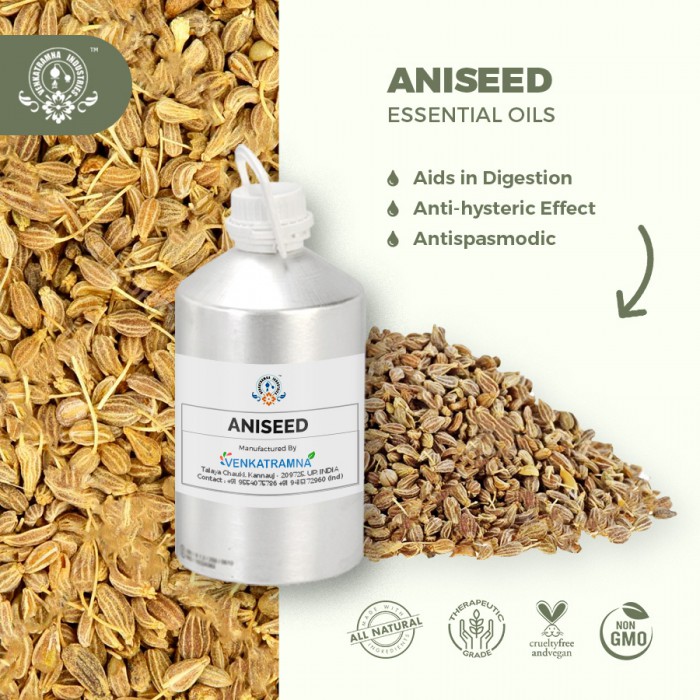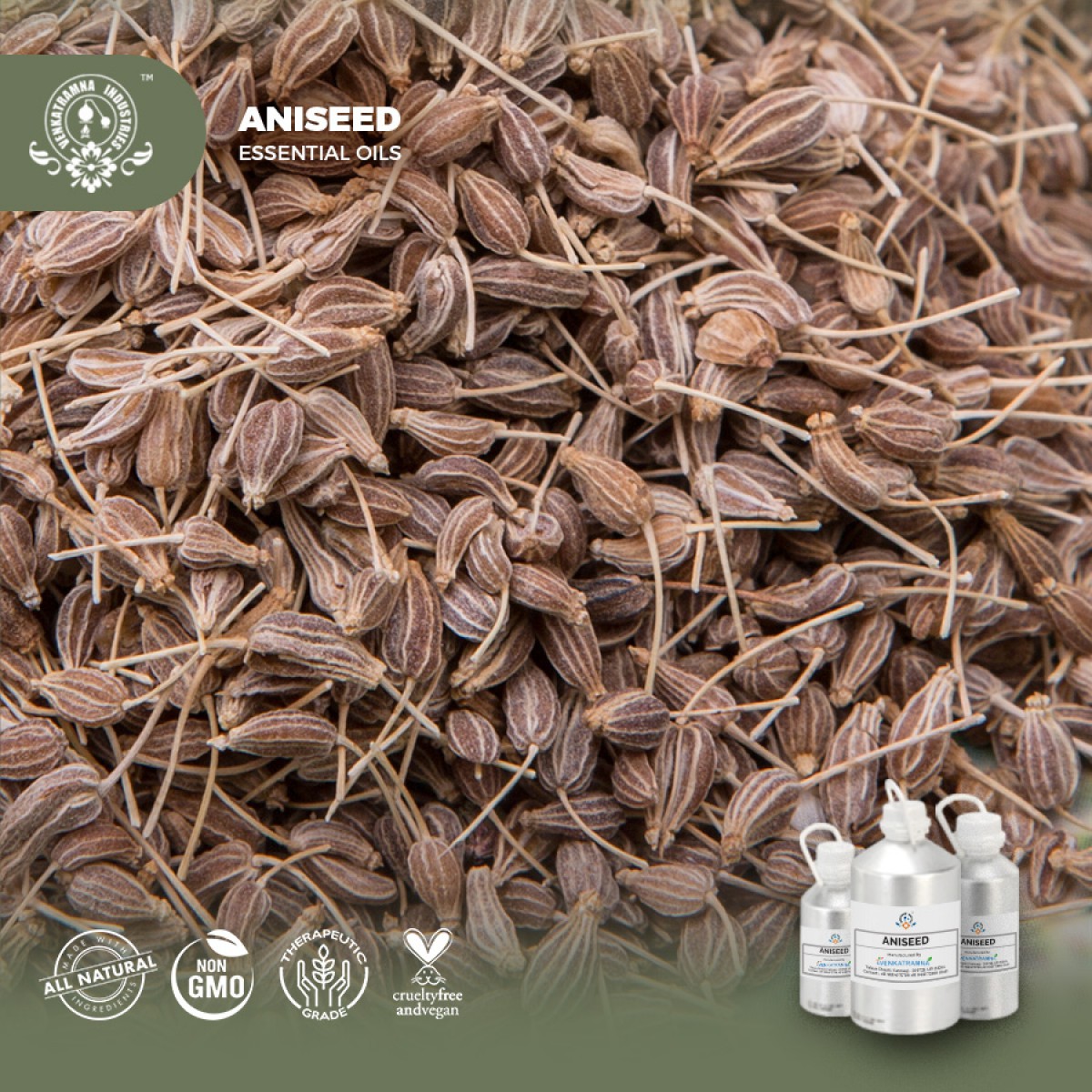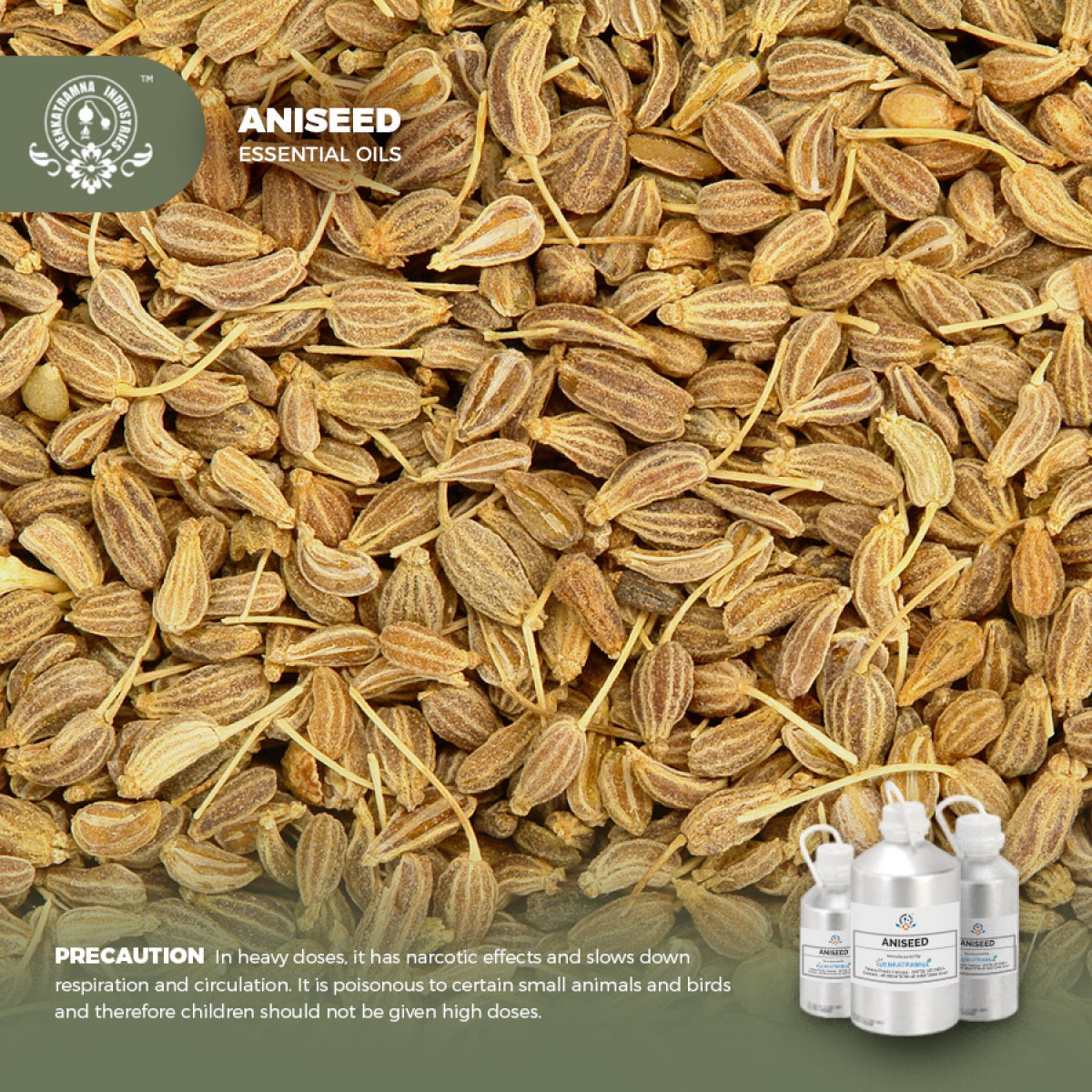Botanical Name: Pimpinella anisum Common name: Saunf, fennel seeds, Read More
|
Botanical Name: |
Pimpinella anisum |
Common name: |
Saunf, fennel seeds, |
Plant family: |
Apiaceae |
Genus: |
Pimpinella |
Appearance/Color: |
Colorless to Pale yellow liquid with Licorice odor. |
Odor: |
Distinctive scent of licorice, Rich and Sweet. |
Blends With: |
Rose, Orange, Lavender, Spicy Essential oils |
Origin |
Egypt |
It is a native of Egypt, Greece,
Crete and Asia Minor and was cultivated by the ancient Egyptians. It was well
known to the Greeks, being mentioned by Dioscorides and Pliny and was
cultivated in Tuscany in Roman times. In the Middle Ages its cultivation spread
to Central Europe
Anise fruit yields on distillation from 2.5 to 3.5 per cent. of a fragrant, syrupy, volatile oil, of which anethol, present to about 90 per cent., is the principal aromatic constituent. It has a strong Anise odour and separates in the form of shining white crystalline scales on cooling the oil. Other constituents of the fruit are a fixed oil, choline, sugar and mucilage.
The complete range of conditions
or methods of use are beyond our control therefore we do not assume any
responsibility and expressly disclaim any liability for any use of this
product. Information contained herein is believed to be true and accurate however,
all statements or suggestions are made without warranty, expressed or implied,
regarding accuracy of the information, the hazards connected with the use of
the material or the results to be obtained from the use thereof. Compliance
with all applicable federal, state, and local laws and local regulations
remains the responsibility of the user.
The FDA has not evaluated the
statements on this website. No claims are made by Venkatramna Industries as to
the medicinal value of any products from vriaroma.com or by us. The information
presented here is for educating our customers about the traditional uses of
essential oils and is not intended to diagnose, treat, cure, or prevent any
disease. You are responsible for understanding the safe application of these products.
If you have any questions, please call or email us for further information.
As per NAHA guidelines, New Directions Aromatics
(NDA) does not recommend the ingestion of essential oils. It is imperative to
consult a medical practitioner before using Essential Oils for therapeutic
purposes. Pregnant and nursing women and those taking prescription drugs are
especially advised not to use this product without the medical advice of a
physician. The oil should always be stored in an area that is inaccessible to
children, especially those under the age of 7.
Aniseed is native to the Middle
East and the Romans used it in little cakes that they ate at the end of their
banquets. Aniseed is traditionally used with vegetables that can be
indigestible such as cabbage, onion, cucumber, carrot, turnip and beetroot..
Aniseed is used to flavour many alcoholic drinks such as Pernod, Greek ouzo and
mastikha, anesone from Italy and the French drink, pastis. Apart from that it
have several pharmaceutical and ayurvedic properties. In India, it is widely
used in Pickels since ancient times.
Anise enjoys considerable
reputation as a medicine in coughs and pectoral affections. In hard, dry coughs
where expectoration is difficult, it is of much value. It is greatly used in
the form of lozenges and the seeds have also been used for smoking, to promote
expectoration.
The volatile oil, mixed with
spirits of wine forms the liqueur Anisette, which has a beneficial action on
the bronchial tubes, and for bronchitis and spasmodic asthma, Anisette, if
administered in hot water, is an immediate palliative.
The flavor and aroma of
its seeds have similarities with some other spices, such as
star anise, fennel, and liquorice. Anise oil is a good antiseptic and is
used, mixed with oil of Peppermint or Gaultheria (Wintergreen) to flavour
aromatic liquid dentrifrices.
·
Anti-epileptic & Anti-hysteric Effect
·
Antiseptic
·
Antirheumatic
·
Antispasmodic
·
Aperient
·
Carminative
·
Cordial
·
Decongestant
·
Aids In Digestion
·
Treats Respiratory Disorders
·
Insecticide
·
Sedative
·
Stimulant
|
S.No |
Key Constituents |
Strength (%) |
|
1 |
(E)-Anethole |
95.0 |
|
2 |
Estragole |
4.4 |
·
Hazardous: Drug interaction; potentially
carcinogenic, based on estragole content; reproductive hormone modulation; may
inhibit blood clotting.
·
Contraindications (all routes): Pregnancy,
breastfeeding, endometriosis, estrogen-dependant cancers, children under 5
years of Age.
·
Caution (Oral): Diabetes medication, anticoagulant
medication, major surgery, peptic ulcer, hemophilia, other bleeding disorders.
·
Maximum Dermal Use Level: 0.2% (IFRA)
·
Adverse Skin Reactions: Not known but
(E)-Anethole is prone to oxidation and its oxidation products may be skin
sensitizing.
·
Cardiovascular Effects: (E)-Anethole inhibits
platelet aggregation, an essential step in the blood clotting cascade.
·
Reproductive Toxicity: (E)-Anethole is
estrogenic in invitro yeast assays and fennel tea has shown invivo estrogenic
effects in humans.
·
Hepatotoxicity: Not Found
·
Acute Toxicity:
o
ORAL (LD50): Acute: 2250 mg/kg [Rat]
o
DERMAL (LD50): Acute: 5000 mg/kg [Rabbit]
·
Subcute & Subchronic Toxicity: Skin: May
cause skin irritation. Eyes: May cause eye irritation. Ingestion: May cause
gastrointestinal tract irritation. Inhalation: Inhalation of mist or vapor may
cause respiratory tract irritation.
·
Carcinogenic: Not Classified
·
Ecotoxicity: Not available
·
Products of Biodegradation: Possibly hazardous
short term degradation products are not likely. However, long term degradation
products may arise.
·
Toxicity of the Products of Biodegradation: Not
available





 MSDS-Anise.pdf
MSDS-Anise.pdf




